Waterproofing spray for outdoor adventures
The smartest way to use waterproofing spray and wash for tents, jackets and footwear! I usually get raindrops falling on my head, but since I waterproofed my gear, things...
read moreA ceramic coating like Nanoflex Dura for the car offers protection for your vehicle – from the outside, but also from the inside. There are a variety of options for car sealing these days. But car paint sealing with ceramics is the current state-of-the-art solution in the field of bodywork. There is currently no alternative that would combine more trump cards. As a provider for the ceramic coating, we use materials that develop their effect in the nano range.
Car : The sealant against dirt
One argument in favor of car sealing with ceramics is the dirt-repellent properties. But what is actually behind this? First of all, the artificially created lotus effect means that all water rolls off the surface on its own, taking a considerable amount of dirt with it. The airstream supports this process. On the other hand, you rarely have to help it along. Note that topping with polymer sealants and waxes in addition to ceramic coating is worthwhile to fight off even the most stubborn water droplets.
Many cleaning cycles are thus obsolete. This is very advantageous because it saves time. You also avoid expensive washes at the car wash. Many car owners are also pleased that they have to endure fewer annoying sales pitches at service stations. In addition, worries that the paint could be damaged by hard bristles from too many washes are eliminated. Cleaning acids, by the way, are no danger: they can’t harm the ceramic coating. If you want, by the way, you’ll never have to go to the car wash again. You can find out more about cleaning in the section on application.
Get in touch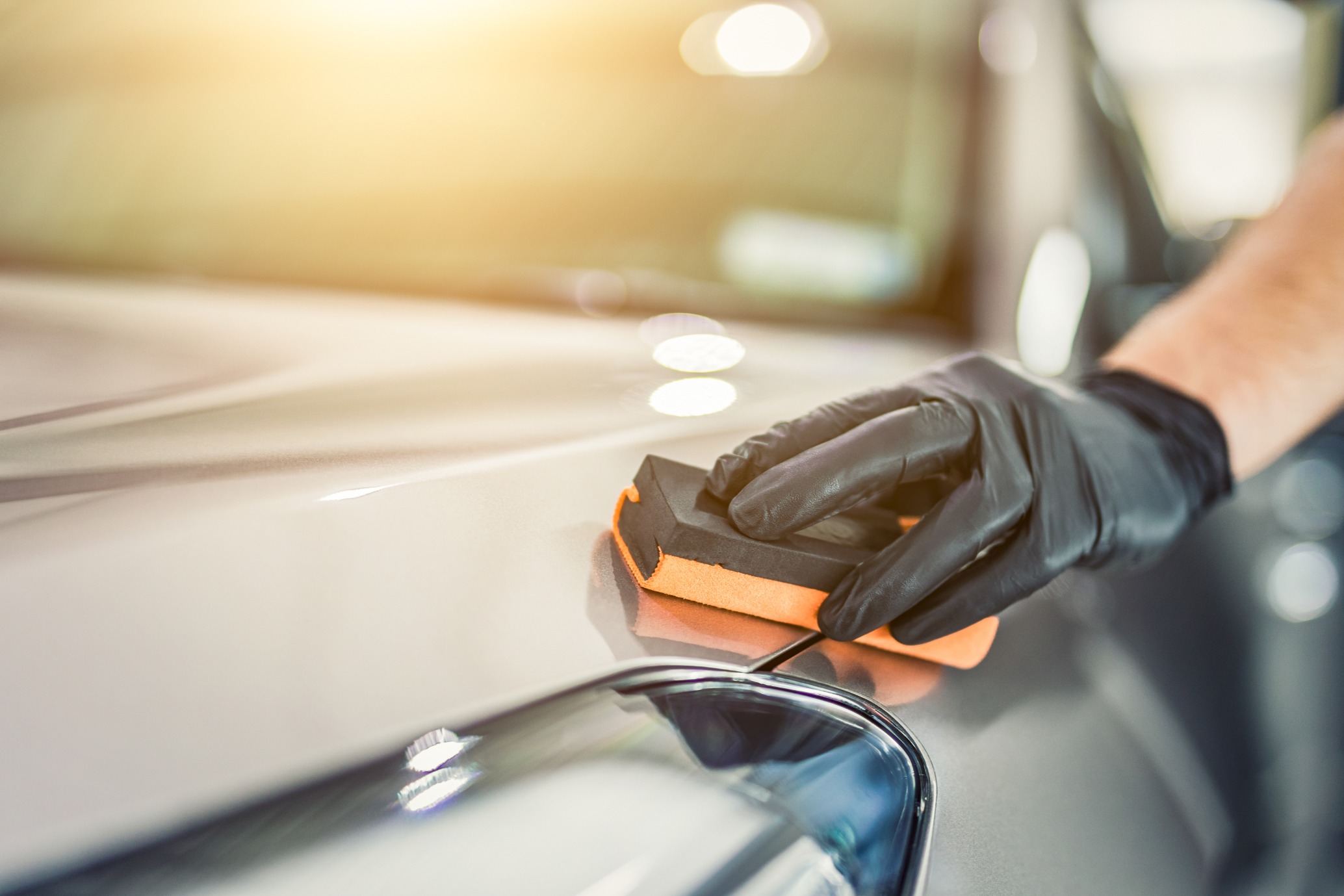
Heat hardly poses a threat to this type of sealant. It permanently withstands temperatures of up to 650°C without losing even one of its valuable properties or shining less beautifully. Parking next to a heating mantle or intense sunlight can therefore largely be of no concern to you. But this is also due to the fact that ceramic sealants are generally very UV-resistant, which in turn stops the premature aging of the car body.
But even working with a powerful heat gun, for example to remove advertising stickers, can be carried out without hesitation. These devices usually operate at temperatures of between 80 and 600°C. If things get hotter, everything is still in the cool zone for your paint: For a short time, the protective layer can cope with high temperatures of up to 1000°C.
Get in touch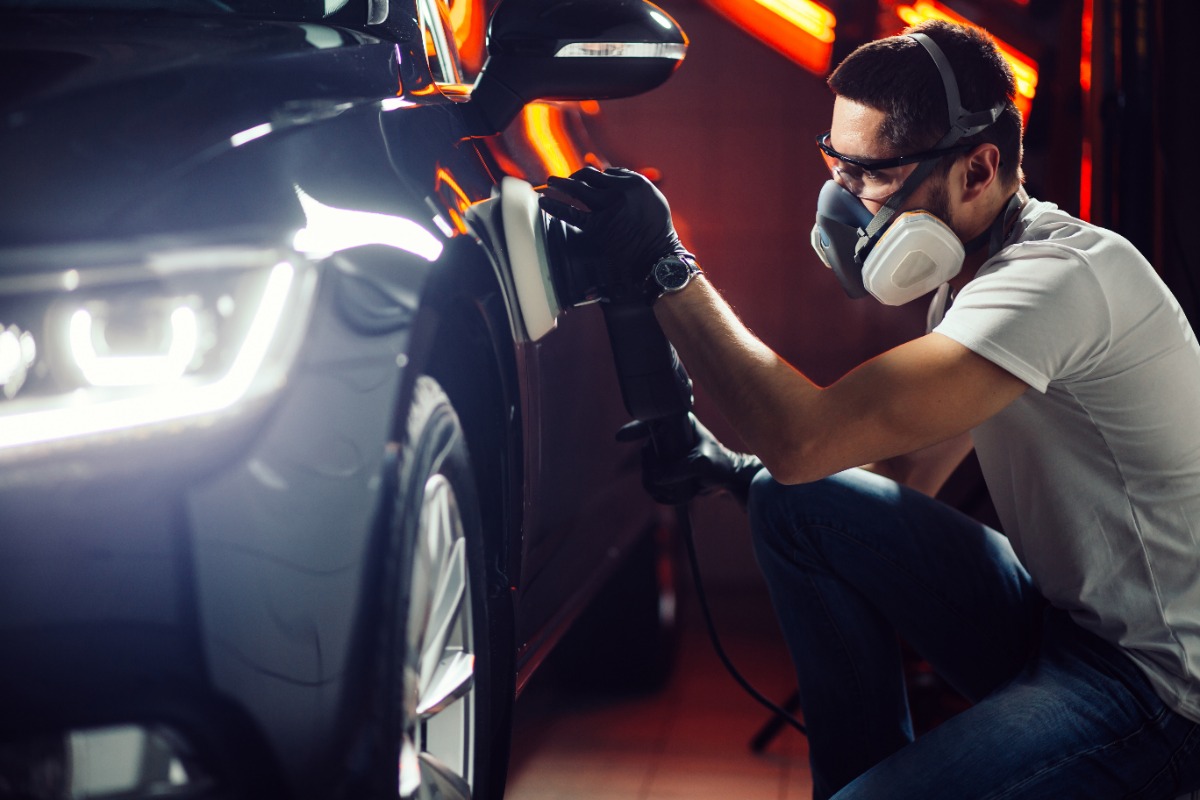
A car is a mesh of numerous materials. This is particularly evident in the interior. The good thing is that nanocoatings with the “easy to clean” effect are possible on various materials. The surfaces of the following materials can be treated:
As you can see, you can find numerous ways to protect your car – from the outside and from the inside. Keep in mind that there are several types of ceramic coatings that differ slightly. They may not be applicable to all the materials mentioned. It is best to consult with specialists so that you can get an individual solution for your vehicle.
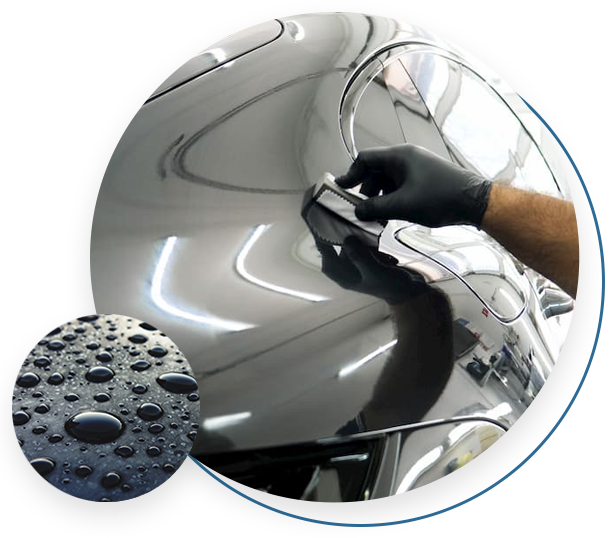
Other sealers like carnauba wax need to be renewed much sooner. Sealing with ceramics lasts up to 36 months, and extensive polishing before applying the sealant helps the color pigments shine. Added to this is the attractive gloss.
![]()
Everyday wear and tear hardly affects the coating. Scratches and other damage can often be avoided. The lotus effect allows water to bead up easily and wash away dirt. The non-stick effect generally makes it difficult for dirt to take hold.
![]()
Leased vehicles are usually replaced after a few years anyway. This period can often be bridged well with a single sealant. The ceramic coating protects the car from scratches, bird droppings and other dirt. Without sealing, the paint of a car would otherwise be damaged in the long term.
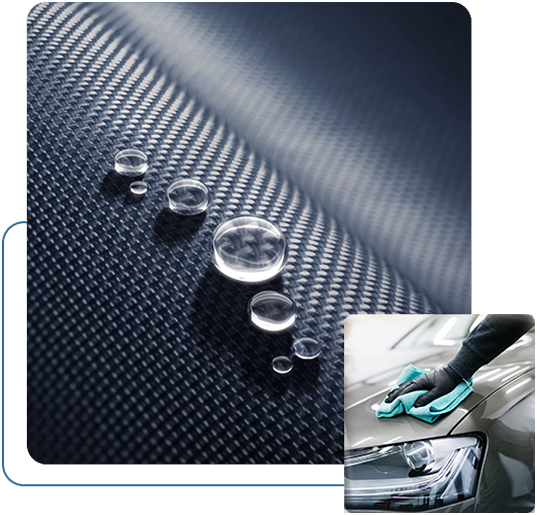
Today, every car is painted, because even without a sealant, this layer on the body offers numerous advantages. Among them is that it protects the underlying metal from corrosion, for example. This is achieved because paints form an impermeable barrier against moisture and salt. However, these elements are necessary to initiate and maintain the undesirable chemical reactions. In addition to corrosion protection, coatings also serve to keep the influence of temperature low. With the help of additives, paint can be colored or appear matte.
But what is paint actually? Paint is a liquid or powdered substance used for coating. Varnish comprises ingredients that react chemically or physically to form a continuous film. Due to the properties of the underlying chemicals, paint is usually glossy. Special automotive paints are used for application to vehicles. Binders are an important component, but solvents, fillers, pigments and additives are almost always included as well.
In car manufacturing, paint is applied in layers to achieve a certain film thickness. It should be as thin as possible to keep costs manageable. But it should also be thick enough so that the visual impression is uniform. The film thickness, along with other factors, determines the properties of the paint. It is desirable for the coating to achieve an advantageous hardness while remaining elastic and, of course, being as scratch-resistant as possible. Sensitive measuring instruments can be used to measure the coating thickness precisely so that the coating will stand up in practice.
Get in touch







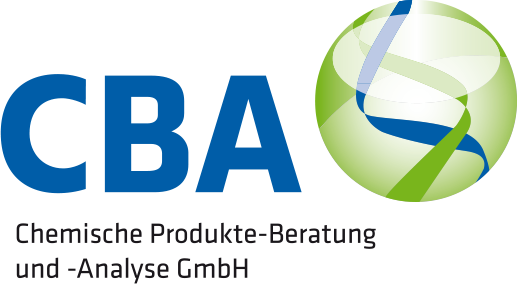
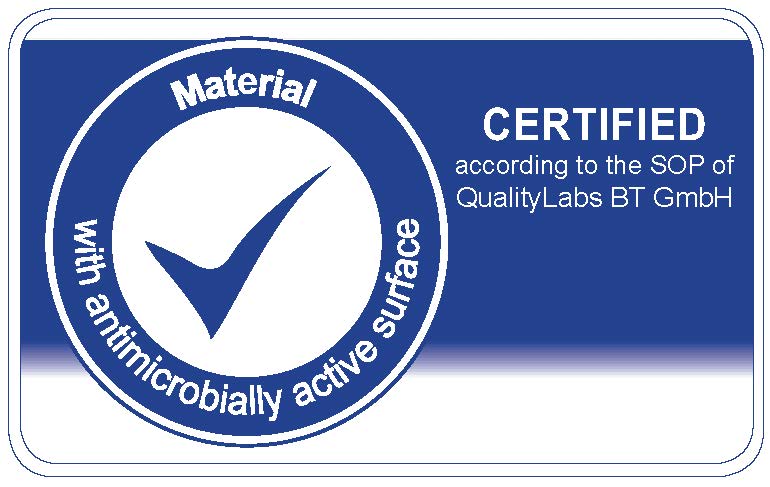


The liquid thus has no other chance than to follow gravity. In the process, the water absorbs most of the dirt particles that come into contact with it. This is because even the dirt only lies loosely on the coating and does not form a close bond with the surface. With superhydrophobicity, hardly any annoying water spots
remain due to evaporation. It is understandable that this property is so popular that it is in such demand in many areas of everyday, public or business life.
In the 21st century, time is scarce and hardly anyone likes to spend time cleaning – especially not in or on the car. How good that ceramic coating enables the “easy to clean” principle. A nano-coating like Nanoflex Ultra prevents dirt deposits. Sometimes a shower of rain is enough for a layer of dirt to detach itself from the surface.
In most cases, dirt can be removed by simply washing it off by hand. If the dirt is on the bodywork, rims or headlights, you can simply take a garden hose and run water over the respective areas.
Get in touch
A kind of lotus effect with the coveted superhydrophobic and oleophobic properties you get with a ceramic coating. Both have very specific characteristics and advantages. To further tease out the positive effects, it is sometimes worthwhile to apply additional layers of special coatings or plastics.
And all this goes back to a plant that looks lovely and is a real marvel of nature: the lotus flower. By means of evolution, it has harnessed the effect of certain chemical molecules and works at the level of micro- and nanoparticles.
Get in touch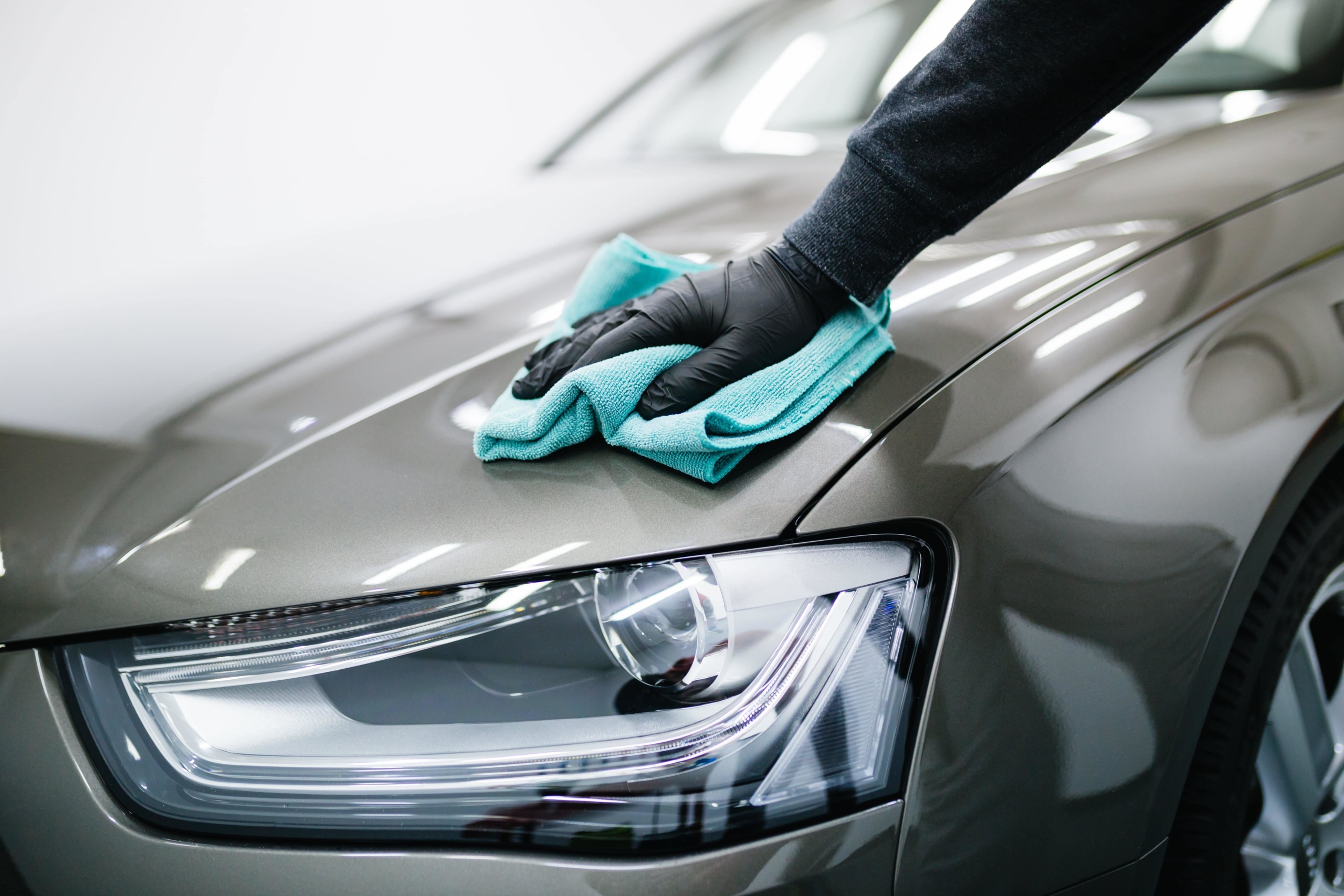
A car paint sealant is therefore versatile and helps keep your vehicle looking good inside and out. For longer, you’ll retain the imposing look of a new car, which is known to go a long way. In business, sealing helps improve your impression on business partners and customers because your car is like a figurehead for you.
Tip: Sealing with a ceramic layer in the nano range is particularly suitable for leased vehicles. In addition, the nano sealant lasts up to three years after a single application.
Get in touch
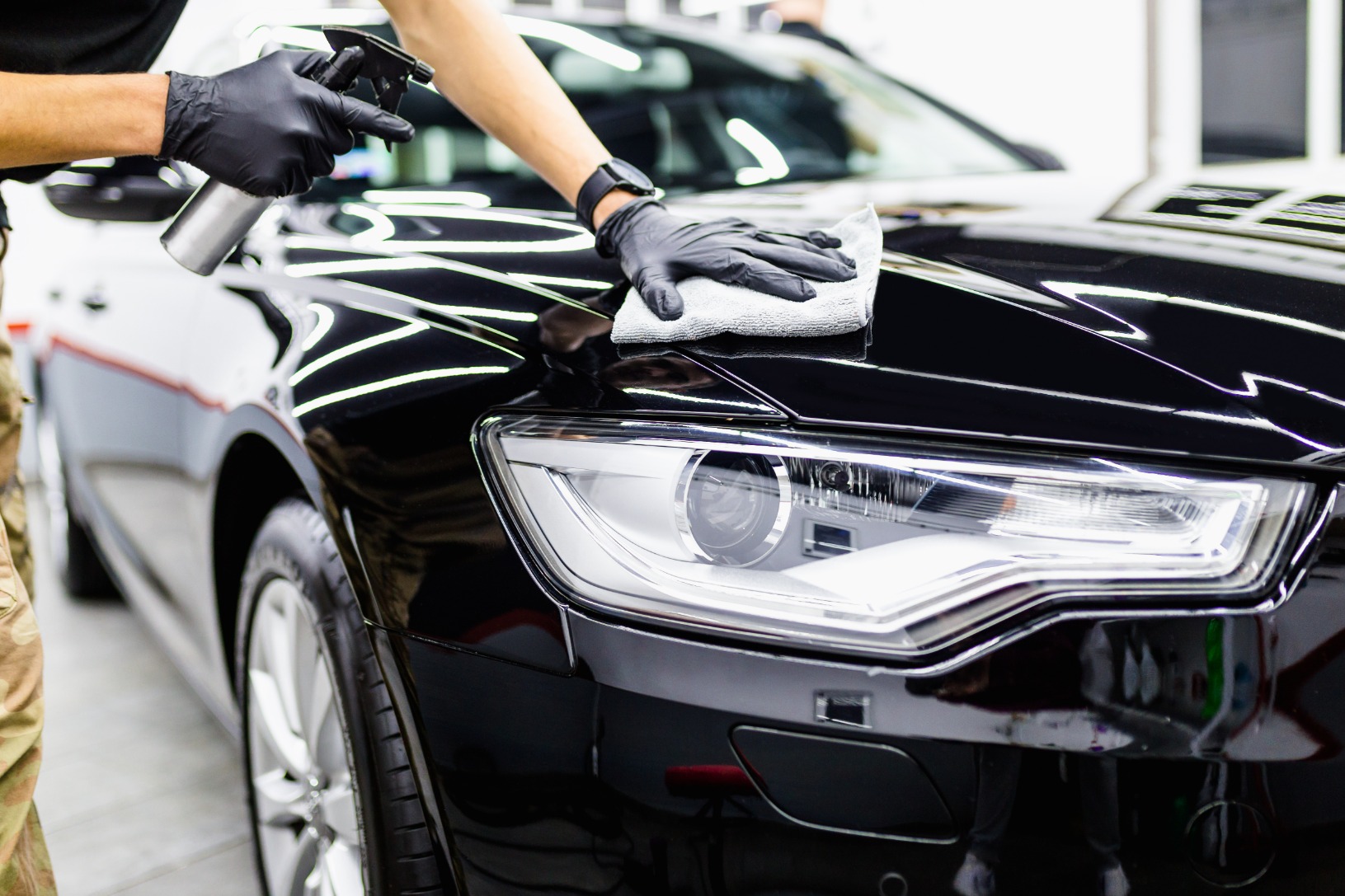
Compared to an untreated paint, the sealant is generally not particularly susceptible to dirt. The best example is certainly the reduced number of insects whose remains accumulate on the bodywork, making it an unsightly sight. Those who fear soiling by graffito are also well advised to opt for nano-coating: The material is ultra-tight and does not allow paint particles to penetrate deeper.
Another advantage is the increased resistance to bird droppings and thus to one of the biggest annoyances in the everyday life of a car owner. Those who have their cars sealed with a ceramic-based car sealant therefore have to deal with significantly less permanent damage than others. If stubborn dirt is removed soon after it occurs, you won’t have to deal with any restrictions at all.
Get in touch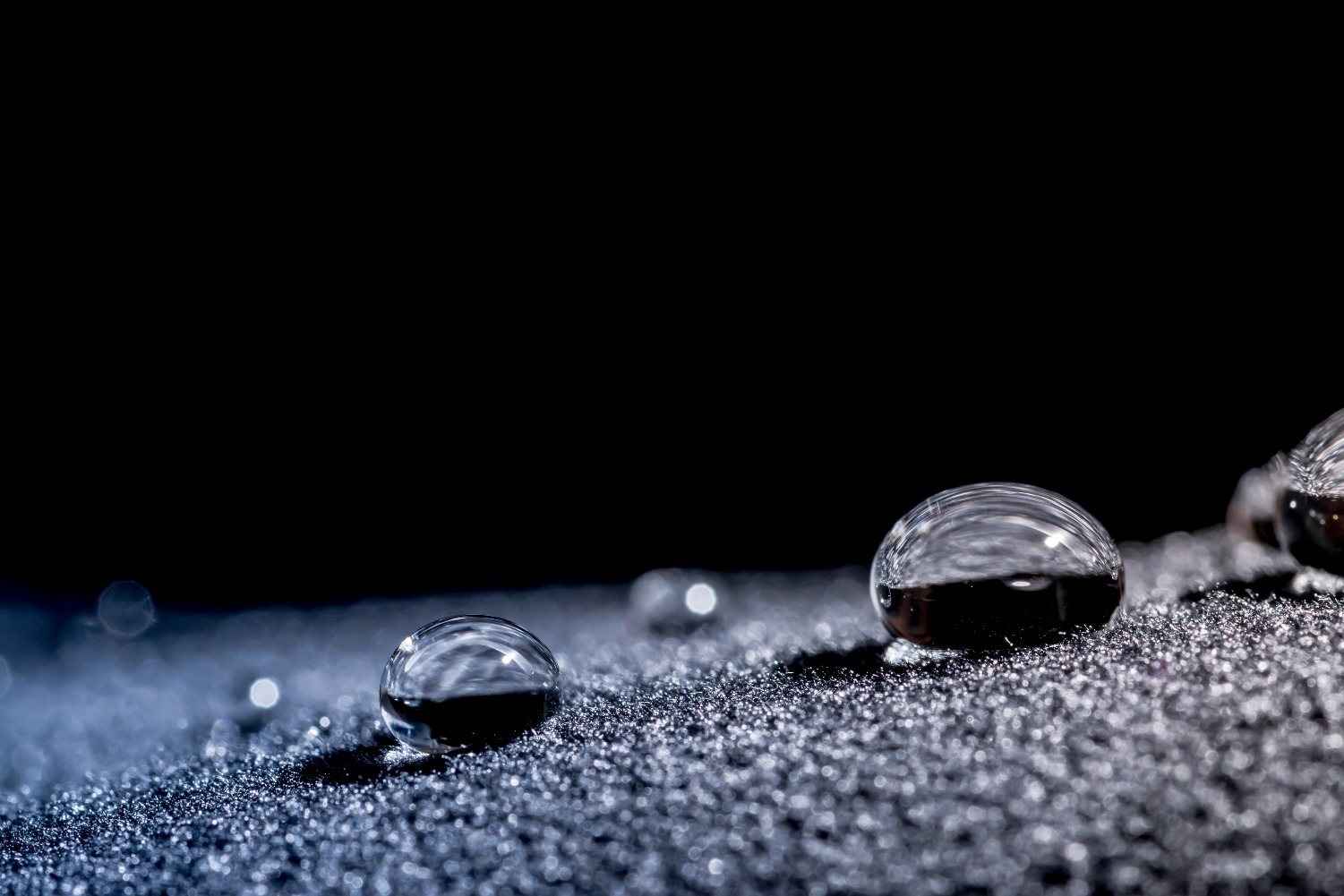
In addition to the exterior application on the car, the protection is also available to you on the interior. Take the opportunity to preserve your interior permanently and avoid annoying scratches. The process is especially lucrative on surfaces that are particularly ornamental and attractive and represent a great value for the vehicle. This is because the ceramic coating such as Nanoflex Dura VF is also suitable for sealing plastics – whether new or used.
The lotus effect of nano-based ceramic sealants therefore takes effect in the vehicle, for example, if you spill a drink while driving. But the sealant also keeps the surfaces in the vehicle intact, so that there are no immediate unsightly scratches when keys, zippers or bags repeatedly brush against them. The popular scratch protection avoids much of the normal wear and tear due to the hardness of the material.
Another complex problem in the car comes from dust. It consists of pollen, clothing fibers, skin flakes and many other tiny particles. Smokers also have to deal with deposits from cigarette smoke. Dust is not always a problem: if you regularly wipe the console with a dust cloth, you can usually remove it easily and almost effortlessly. The situation is different if cleaning is frequently postponed or forgotten. In addition, dust can reach a new dimension of resistance due to higher humidity and other environmental influences.
Then it is usually not so easy to get rid of a layer of dust “in one wipe”. But if you have your vehicle sealed with ceramic on the inside as well, even aggressive dust can no longer settle without compromise. For stubborn deposits, simply reach for warm water, which you enrich with a cleaning agent, and gently go over the surfaces with a rag.
Get in touch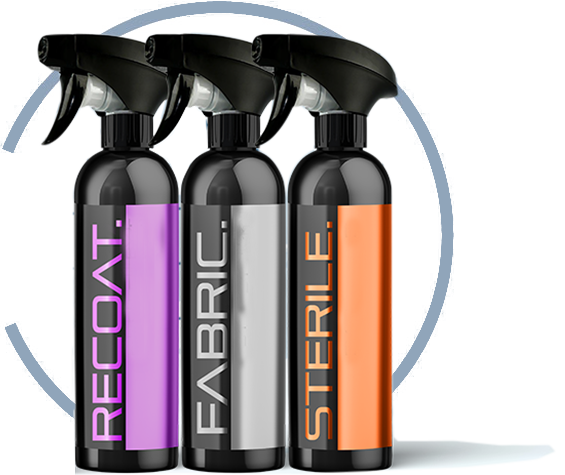
A sealant is an invention of nature. Even if it may seem so: man had nothing to do with it. Even ceramic sealants are based on an ancient principle that each of us can observe in many places in nature: the lotus effect. Strictly speaking, mankind imitates parts of certain plants with paints and sealants. The lotus effect goes back to a plant where this is obvious, namely the lotus plant (also known as lotus flower). There are actually two different species of this, but the distinction is not important for this topic.
The lotus flower is an enchanting aquatic plant that occupies several square meters of surface area in bodies of water. Its spreading leaves rest side by side on the surface of the water. They almost seem as if they are loosely resting there. But in fact they are connected by very long stems through the water to the lake bottom, into which the plant has anchored itself by its roots. Occasionally, the plant also stretches beautiful flowers between the leaves in the air, reminiscent of the flowers of roses.
But the lotus effect affects the large leaves, which are shaped much like a shield and have a natural seal. Because they use the water surface, they are in an excellent position to collect as much sunlight as possible. And they need that for photosynthesis. They benefit from not being shaded by other plants. Finally, if you watch the lotus plant’s leaves when it rains, you can observe the lotus effect: Although the raindrops fall directly on the leaves, they are barely wetted. Instead, the water droplets simply roll off. And shortly after the shower ends, the leaf looks almost as if there had been no rain at all.
The fact that the lotus plant has leaves with this property is only to its advantage. On the one hand, the leaves do not have to contend with a heavy weight that can form due to wet wetting during a rainstorm. Indeed, weak leaves could then simply sink into the water. There they are useless for the plant, die quickly and thus would probably simply waste the valuable resources of the plant. Thanks to the lotus effect, the lotus flower is therefore able to form larger leaves than other water plants.
In addition, the lotus effect causes the leaves to remain clean and intact. Dirt would be a problem for the plant because it interferes with the collection of sunlight and ultimately energy metabolism. The beading water simply takes particles that are on the leaf (such as pollen, dust, dead insects, and more) with it and washes them into the surrounding water. This is because, just like the water, other substances cannot stay on the sealed leaf surface. Germs and pathogens are also washed away so easily that they have no opportunity to penetrate the leaf tissue. The lotus flower leaves are therefore self-cleaning.
In the course of evolution, the lotus effect has evolved because plants in the water habitat with this property were able to gather the most energy and thus survive longer in the wiry nature to form new offspring and preserve their genes. The competing plants could not use the habitat conquered by the lotus flower for themselves. While there are other plants that are built similarly to the lotus, they often use slightly different conditions to successfully survive and reproduce.
When it comes to sealing your paint, car owners have a choice between carnauba wax and the ceramic coating, among others. But which is better? To begin with, the two variants differ considerably from each other. It is therefore worth making the comparison to make a good decision. Probably the most important difference is that the ceramic coating is final. Once applied, it can only be removed by sanding. Paint and coating are inseparable.
The service providers who coat vehicles with a ceramic sealant have a lengthy work process ahead of them. This requires numerous steps with exact care and takes many hours and not infrequently even several days. This also explains the higher prices, and that you have to rely on a professional service provider to carry it out. A large part of the work involves the preparation of the surfaces. They must be precisely polished everywhere. Only after polishing may the ceramic layer follow, because only then is it guaranteed that the desired optical effect is correct.
Another elementary difference from carnauba wax is that a ceramic coating is much harder. As a result, the wax layer is more susceptible to deep scratches and has to be renewed much sooner. While ceramic sealants last up to 36 months on average, the life of a wax sealant is only about three months. That is only about one-twelfth of the service life. Unlike the hard coating, carnauba wax can also be removed chemically, which does not affect the vehicle paint.
However, this does not mean that only wax would cause scratches. The nano coating can also be affected by damage up to stone chips. Nevertheless, their number and depth is often less. If you are careful with your vehicle, you will hardly ever have to deal with noticeable scratches anyway. One advantage of wax is that it can even be polished to get rid of the scratches immediately, which is not possible with ceramic. Wax is also less expensive because it is easier and quicker to apply – this applies to both application and removal. The decision between wax and ceramic coatings is therefore very often a question of budget.
The natural seal of lotus petals is a marvel of organic molecules so small that we can speak of the micro and nano scale. It is part of the cuticle. This refers to the uppermost layer of the leaf, which has only the task of separating it from the environment. Its special structure, in conjunction with the chemical properties of the molecules, ensures that contact between the leaf and the water droplet is as minimal as possible.
Tiny nubs – known as papillae – vary slightly in height and cover the leaf surface like a forest. They are so small that they cannot be seen with the naked eye. To be precise, the papillae are about 15 to 20 micrometers high. Even the tiniest drop of water is significantly larger than each of these nubs. And that is one of the reasons why water cannot hold on well here. This is because the water droplets always rest on the top of the nubs and are unable to get into the spaces between them. These are also only about 15 micrometers wide. Penetration into the interstices would be necessary, however, so that the leaf of the lotus flower could be wetted.
In addition to the papillae, the wax layer that covers the entire leaf surface also plays a role. This means that every single nub is also waxed. Although this wax is not identical to the wax used as a car paint coating, the two variants nevertheless share common features. In chemical terms, a wax is a substance that is water repellent. In technical jargon, this is called hydrophobicity. This property arises because there are virtually no adhesion forces between wax and water droplets. These forces are a kind of attractive force.
The papillae therefore ensure that the water rests on the tips, so that it always has to maintain a tiny distance from the leaf surface. At the same time, the wax layer prevents the water from sticking to the leaf at all. But in addition to these valuable properties of the cuticle of the lotus leaf, the water also has a special property that helps to influence the lotus effect.
Water is characterized by its surface tension. This ensures that the water takes on a spherical shape and maintains the largest possible volume with the smallest possible surface area. Due to gravity or centrifugal forces, the spherical shape can naturally distort, so that it is not always obvious to us. But we can sense it in raindrops and see it in the shenanigans of the ISS crew in space. We can also see it in the lotus effect on the leaf of the lotus flower. Because the surface tension causes the water to take this special shape, it is prevented from getting deeper between the nubs in the cuticle.
The water is thus forced by itself to remain on the tips of the nubs. But of course the water would not roll off the leaf all by itself. Despite its sophisticated properties, some external influence is still necessary for this to happen. If the leaf lies crooked, the water can follow gravity and roll down or collect in the center of the leaf. Incidentally, it can evaporate there more easily than on other surfaces. This is because the adhesive forces, which are not strong, require less energy input. The wind is also able to set the water droplets in motion and leave the leaf surface again.
This is the secret of the lotus effect. But it exists not only in the lotus flower, but also in several other plant species. Often, but not always, they are found near water. The lotus effect also exists in the world of insects. Many insect wings have a similar sealing of the surfaces, so that the wings can reliably dry again after the morning dew.
Industry has discovered the effect for itself and is making great efforts to imitate the natural properties of the lotus leaf and use them for a wide variety of things. The reason: wetted surfaces are undesirable for various everyday objects. In the case of car bodywork, for example, they would promote rust and leave unsightly water spots.
The phenomenon of self-cleaning is also particularly interesting. However, while the plant and insect worlds swear by organic molecules that cause the effect, industry prefers to rely on inorganic ones. These usually have a longer shelf life because they cannot be readily broken down by microorganisms, and are also more durable because they cope better with environmental influences such as those caused by UV radiation.
However, while such a lotus leaf or insect wing is only hydrophobic (water-repellent), the industry goes one better with superhydrophobicity. A superhydrophobic protective layer is intended to achieve particularly intensive water repellency on surfaces, because even the finest water stains can easily spoil the appearance. In other words, the lotus effect is supposed to be outdone by man. With the right materials, this is no problem at all. With some ceramic coating prototypes, for example, you can equip your car with such a property.
Video Superhydrophob
But there are many other possible applications besides the automotive sector. Water can become a disruptive factor on a wide variety of materials. These include glass, for example, but solar cells also benefit greatly from a sealant with superhydrophobic or at least hydrophobic properties. The reason is that, like a lotus leaf, the solar cell is designed to allow as much sunlight as possible to enter unhindered. Water and dirt only interfere with this.
Oleophobicity is also interesting in this context. Oleophobicity differs from superhydrophobicity in that the surface defies not only water but also the most stubborn dirt such as oil. If a surface is oleophobic, machine or olive oil can therefore be removed as easily as water on a lotus leaf – perhaps even better. Incidentally, the industry can make a surface both superhydrophobic and oleophobic. This is also possible on materials to which these properties are not usually attributed. These are textiles with their fine fiber fabric.
With a high-quality ceramic-based nanocoating! When this is applied to the surface of the varnish, a firm chemical bond is formed between the varnish and the coating. Although visually the varnish looks like an exactly smooth surface, on the molecular level it is not. The interconnected elements form numerous peaks and valleys. But these are so tiny that they can only be studied with technical aids.
For the protection of the car, however, these minimal unevennesses can have consequences. Because these are precisely the places where all kinds of substances are deposited, dirt or water, for example. If you wipe off stubborn incrustations and are too rough, you quickly rub off the paint as well. But then the bodywork loses its protection. Because our atmosphere is full of water (humidity) and salts, the bodywork quickly begins to rust in these places. Rust, in turn, causes the metal to decompose. It is only a matter of time before untreated rust spots form holes.
Anyone who now equips their paint with a ceramic coating is known to have a much lower probability of such rust spots occurring. The trick is that the ceramic fills the finest gaps in the paint at the molecular level, creating a solid branching that cannot be unraveled under any circumstances. This already results in a much smoother surface, which can already deter some damage. But like varnish, this coating also forms a continuous film, which once again covers the entire surface and forms a uniform layer. The paint is thus covered everywhere. If done well, not a single molecule of the varnish will protrude from the ceramic coating.
If you opt instead for a polish or wax coating, you can’t expect it to penetrate so deeply between the lacquer layer. In fact, the molecules of polishes and waxes remain on the lacquer layer. In principle, no branching occurs in the process. Although such layers last for a while, they are lost over time, so they have to be replaced again. What’s more, you can completely remove these layers again if you want to.

– perfect for you!
A ceramic coating is mainly used when the protection of the car body is to be ensured. But it can also be applied to rims, headlights and certain interior surfaces. When applied, the coating forms a strong chemical bond with the underlying paint.This bond is strong and permanent
. This means that it cannot be loosened by ordinary environmental influences or accidentally washed off. If the car paint sealant is ever to be removed again, this must be done by machine. A long-lasting durability is therefore guaranteed. In general, therefore, ceramic sealing lasts the longest of all alternatives. In figures:
The service life* is up to 36 months with a single treatment.
This corresponds to around 100,000 kilometers driven or 100 cleanings in the car wash.
Each subsequent treatment increases the service life by a further twelve months.
(* the durability of the sealant)
A popular reason for choosing nano coating: The attractive look that the treated surface exudes. The gloss created by the unmistakably smooth structure is remarkable. But the aesthetic look is also due to the enhanced color intensity. And this, in turn, has its origin in the lengthy polishing process that is carried out directly before coating. Do you want your car to shine and shine? Therefore, a ceramic coating is an exceptional solution with a high impact factor
. But it does much more, as you will learn in the following paragraphs.
More dirt-repellent than conventionally maintained cars
water repellent due to the lotus effect
fewer wash cycles save time.
A very professional team!
Nanocare is a reputable company with excellent products, probably the best nanoproducts on the market.
They have been a reliable partner for many years.Toni Jacquot, NanoProtection, France
As Nano-Care AG sales partner in the international aviation market, we were able to successfully qualify and list the product with the Liquid-Guard technology by AIRBUS as the first product of this kind for the protection of surfaces against viruses and germs in all cabins.
The Liquid-Guard technology for surface coating is a proven result of scientific innovation “Made in Germany”, which will not only currently, but also in the future, play an important role in the protection of our health.
The service and the professional, scientific support as well as the cooperation for us as partners of Nano Care AG, we can only rate as outstanding and exemplary in every respect.
In particular, we would like to thank Dr. Fabienne Hennessen for her work.Jörg Schukies , AIRDAL GmbH / Decorative Products GmbH; Quality System Manager / Quality Auditor
We were looking for an innovative company that could provide modern solutions in different business areas. Nano Care took the time to understand who we are as a company and the market in which we operate. So far, we have worked with their building and textile protection products, Dura ceramic coatings for automobiles, and the revolutionary Liquid Guard antimicrobial coating. The feedback we receive from our customers is more than satisfactory. We wholeheartedly recommend working with Nano Care and implementing their solutions.
Grigor Mihov , CEO Nano Coat Bulgaria
The smartest way to use waterproofing spray and wash for tents, jackets and footwear! I usually get raindrops falling on my head, but since I waterproofed my gear, things...
read moreThis spray allows any type of bacteria to be killed on surfaces for a period of more than a year – even the “superbugs”! Every year we hear about...
read moreA hype or a profitable investment? Field report on ceramic sealants for cars The internet is full of questions like, “What is the best ceramic coating?” or “Are nano-ceramic...
read more